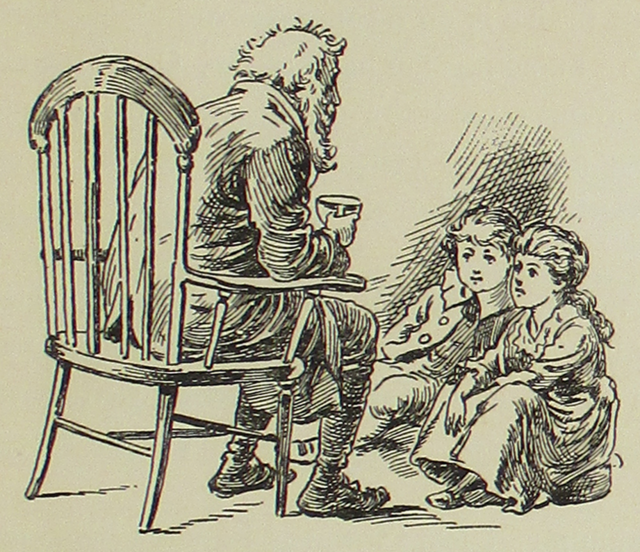By Mike Templeton
Every year around this time our Urban Appalachian Community Coalition blog shares a post that marks the Christmas season. Holiday traditions can be extremely important to Appalachian people since they have historically been one of the ways extended families maintain ties over time and distance. The traditions provide ways for people to hold onto and strengthen bonds. For poor and working-class Appalachians in the mountains and in the cities, Christmas was one of the rare times when people could or would splurge on something that resembled luxury. What may not be widely known outside some of the older folks within Appalachian communities is the tradition of Old Christmas.
I mentioned this tradition last year in an article that covered Appalachian Christmas traditions more generally, but after doing some research on the topic, it seems worthy of more attention. Old Christmas is still honored and celebrated in some parts of the Appalachian regions, and it is still a part of the lives of urban Appalachians who retain some of the old mountain ways. Old Christmas happens on January 6 instead of December 25th. The reasons for this go back to England and have something to do with the way the Appalachian region was settled.
For centuries England had adhered to the old Roman Julian calendar. Most of the. Predominantly Catholic countries in Europe used the Gregorian calendar. One of the main problems with the Julian calendar is that it was not aligned with the stars and ended up adding leap days onto the year so that at one point in the early Eighteenth century the calendar was 11 days behind. With an act of Parliament in 1752, England, and by extension the American colonies, moved to the Gregorian calendar and September 2 suddenly became September 14. This change also moved Christmas Day from January 5th or 6th to December 25th.
By 1752 there was an already existing population of colonists in the Appalachian regions of America that did not get the memo (or ignored it as the case may be). After the calendar switch and people generally began marking the Christmas holiday on December 25, there remained a large population of people who celebrated the holiday in January. This tradition continued well into the Twentieth century and became known as Old Christmas as we caught up with everyone else. But for some Appalachians, Old Christmas remains a part of their lives.
With the dueling Christmas holidays, some people began to just split the festivities between December 26 and January 6 as something of a long and continuous celebration. While this period was a family oriented and indeed a religious celebration, it did take on features of an Appalachian winter Mardi Gras. Whiskey, music, dancing and singing and a maybe a little gun fire became part of the celebration. There is, after all, little to do on a cold winter night in later December and a sip or two of Pappy’s corn squeezins might do a body some good around that time of year.
While the marking of Old Christmas has largely faded along with many of the older Appalachian traditions, there are still people who remember it fondly. There is a church called the Lutheran Church of the Atonement in Wilkesboro, North Carolina which holds an Old Christmas service that includes singing old hymns and an old-fashioned Appalachian holiday. These days the January 6th service also marks the celebration of Epiphany.
Something about Old Christmas that would likely be unrecognizable to most folks is that there is a bit of the macabre about this holiday. There are plenty of Appalachian folk tales surrounding this time of year, from the belief that the animals would kneel on Old Christmas Eve to the method of divining the weather for the coming year from the days between New Christmas and Old, the time around Old Christmas is a time of magic. An old poem by Roy Helton takes the magic of Old Christmas to a much higher level. The poem begins with “Lomey Carter” happening by on “Old Christmas morning” with “nothing much” but “a bite of sweetness and corn bread,” but the poem becomes a tale of murder and ghosts by the end. Ghosts and some spooky magic never seem far off in Appalachian traditions where people know a little about taking the bitter with the sweet.
One could imagine some practical reasons to revive Old Christmas. You could do your shopping while everything is on sale after conventional Christmas, but maybe that is cynical of me. Perhaps the best way to revive Old Christmas is to revive the tradition of a long celebration between conventional modern Christmas and Old Christmas. In any case, The Urban Appalachian Community Coalition wishes everyone the best of holidays no matter what you celebrate. And if you do not mark the holidays at all, enjoy some down time before New Year’s Eve comes around.
Mike Templeton is a writer, independent scholar, barista, cook, guitar player, and accidental jack-of-all-trades. He is the author of the The Chief of Birds: A Memoir. Available from Erratum Press, and Impossible to Believe, forthcoming from Iff Books. Check out his profile in UACC’s Cultural Directory. He lives in West Milton, Ohio with his wife who is a talented photographer. They spend their free time walking around the city and the country snapping photos. She looks up at the grandeur above, while Mike always seems to be staring at the ground.

